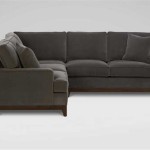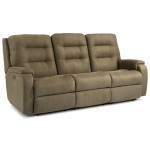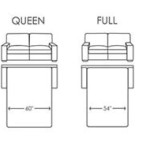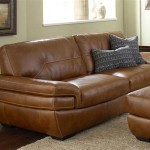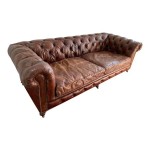Where Did the Word "Sofa" Come From?
The word "sofa," a ubiquitous term for a cushioned seat designed for two or more people, possesses a surprisingly rich etymological history. Its journey through time spans various cultures and languages, reflecting the evolution of furniture and societal customs. Tracing its origins reveals a fascinating glimpse into the history of comfort and relaxation.
The Arabic Connection
The word "sofa" ultimately derives from the Arabic word "suffah." This term referred to a raised platform, often covered in carpets and cushions, used for seating in homes and mosques. The suffah provided a comfortable space for resting, conversing, and receiving guests. This cultural practice reflected the importance of hospitality and social gatherings in Arab societies.
From Suffah to Sofa: A Transcontinental Journey
The word's transformation from "suffah" to "sofa" involved a series of linguistic and cultural shifts as it moved westward. During the Middle Ages, the concept of the suffah, along with its associated word, spread through trade and cultural exchange. The term entered Old French as "soffa," retaining its association with luxurious seating. From French, the word then transitioned into English during the late 17th century, solidifying its place in the lexicon of furniture.
Evolution of the Sofa's Form and Function
The physical form of the sofa also underwent significant changes during this period. While the original suffah was essentially a raised platform, European interpretations incorporated structural elements like legs and frames, transforming it into a distinct piece of furniture. Upholstery, including padding and fabric coverings, further enhanced the sofa's comfort and aesthetic appeal. This evolution mirrored changing social norms and the increasing emphasis on domestic comfort in European homes.
The Sofa in the 18th and 19th Centuries
The 18th and 19th centuries witnessed a flourishing of sofa design, reflecting evolving styles and tastes. The increasing availability of sophisticated fabrics and intricate woodworking techniques allowed for the creation of elaborate and ornate sofas. Different styles, such as the Chesterfield, the Camelback, and the Lawson, emerged, each with unique characteristics and historical significance. The sofa became a centerpiece of the drawing-room, symbolizing status and refinement.
The Sofa in the Modern Era
The 20th and 21st centuries saw continued innovation in sofa design. The rise of mass production made sofas more accessible to a wider population, leading to a diversification of styles and functionalities. The introduction of new materials, like synthetic fabrics and foam cushioning, further expanded design possibilities. Sectional sofas, sleeper sofas, and reclining sofas reflect the evolving needs and preferences of modern consumers.
The Sofa's Cultural Significance
Beyond its functional role as a piece of furniture, the sofa has acquired significant cultural meaning. It has become a symbol of relaxation, domesticity, and social interaction. The sofa often serves as the focal point of the living room, where families gather to watch television, converse, or simply relax. Its presence in literature, film, and popular culture further solidifies its role as a ubiquitous and culturally significant object.
The Sofa as a Reflection of Social Change
The evolution of the sofa also reflects broader societal changes. The shift from formal drawing-rooms to more casual living spaces has influenced sofa design and usage. The increasing emphasis on comfort and informality in modern living has led to the popularity of larger, more relaxed sofa styles.
The Sofa's Enduring Legacy
From its origins as a simple raised platform to its current status as a ubiquitous piece of furniture, the sofa's journey reflects the enduring human desire for comfort and relaxation. Its evolution across cultures and centuries showcases the adaptability and enduring appeal of this essential piece of furniture. The word "sofa" itself, with its rich etymological history, serves as a reminder of the interconnectedness of cultures and the enduring power of language.
Variations and Regional Differences
The term "sofa" enjoys widespread use in English-speaking countries. However, regional variations exist. In some parts of the world, terms like "couch," "settee," or "divan" are used interchangeably with or in preference to "sofa." These variations reflect the diverse linguistic and cultural influences that have shaped the way we talk about furniture.

Sofa Couch Or Settee What S The Difference Darlings Of Chelsea

Sofa Couch Or Settee What S The Difference Darlings Of Chelsea

Couch Vs Sofa Meanings Differences Origin

Sofa Vs Couch What Is The Difference

Why Do We Call It A Sofa Or Couch Settee Inspiration Corner

Sofa Or Couch Quick And Dirty Tips

Q A Couch Vs Sofa Lounge N Writers Centre

Sofa Couch Or Settee What S The Difference Darlings Of Chelsea

Why Do We Call It A Sofa Or Couch Settee Inspiration Corner

What S The Difference Between Sofa Couch And Settee Swyft

